HISTORY OF MUSIC
A Guide To The History of Music Through The Ages
Home †|††DestpÍk††|††Ana Sayfa
by Felicity Bell
NOVEMBER 11, 2020 BY RICHARD ALLEN
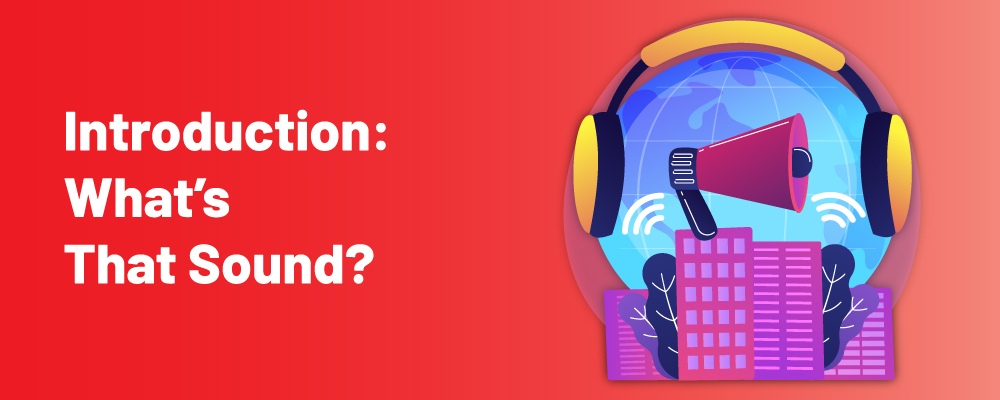
Welcome to our guide on the history of music. Here we’ve composed the historical origin of the musical genres we know and love today, along with how classical music is crucial to many music types through its establishment of musical theory. We’ve gone even deeper than composed music, however, as we’ve also had to explain how music itself as a social phenomenon first came to be.
We have a lot ahead of us, so we’ll start at the beginning with the inventions of music and musical instruments, which aren’t as connected to one another as many would think. Then we’ll discuss the expansion of music types and provide examples of how the most influential music genres started, including classicism. Finally, we’ve engaged in some speculation on what the future of music holds, and what effects the social and cultural climates in the modern world will have on the development of music.
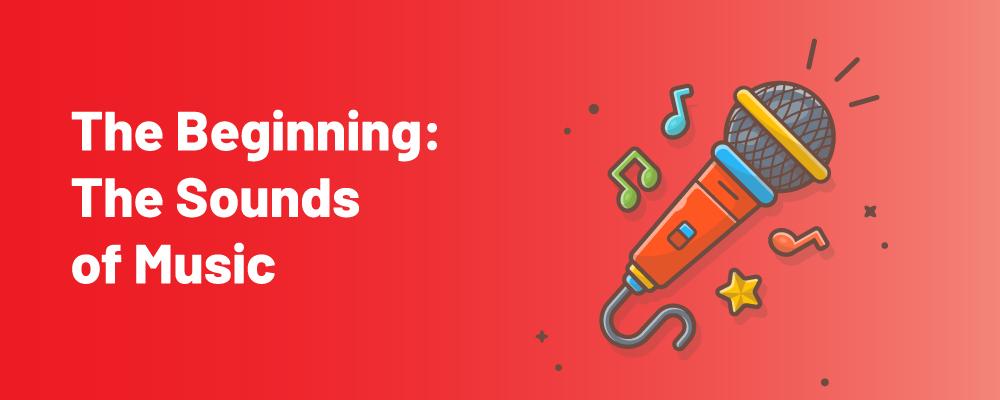
Even before we get into the origins of musical instruments, there has been a debate on where the first sounds of music originated from. We have to walk before we run, after all, and the very sounds that encapsulate music have origins that are just as complex as the instruments we’ve invented to play them.
Where most will think of those instruments and composed pieces when they think of music, both ethnomusicologists and those who study zoomusicology generally agree that there needs to be a distinction to define musical sound against.
This is the distinction between historical music and the pitched sounds that animals would have made since the dawn of time, as well as instances of early speech.
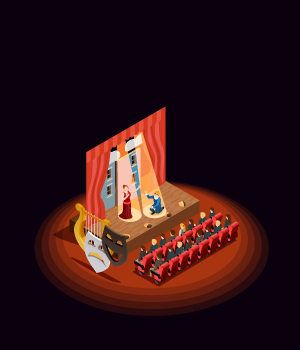 |
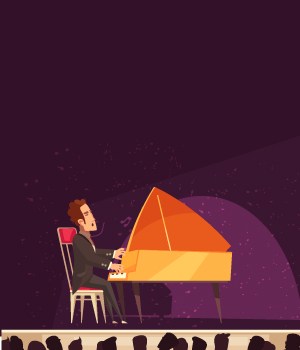 |
If we define music as sounds presented at a variable pitch, then even the earliest proto-humans had a capacity for creating music before they could even speak. The same can generally be said for rhythmic awareness too, due to the possibility that early proto-humans had the motor impulses to create percussion before melody existed. It wouldn’t have been as complex and put-together as we’d expect today, which is where the problem of defining where the musical sound actually starts to rear its head.
The later hominid species, mainly Homo neanderthalensis and us, the Homo sapiens, should have been able to perceive music from their earliest developmental stages. This means they could also create music, as we sapiens have since proven and will be discussing here. There are even arguments that it was our heightened capacity for musical creation that helped us culturally outcompete the neanderthalensis and eventually drive them to extinction.
To properly answer how music started, we need to ask why there would be a need for music. The answer is quite simple and has some crossover with the origins of speech, that being the human drive to cooperate with one another and create the social environments where that cooperation can take place.
The musical sound would have evolved for four purposes, the all-important social cohesion that ensures the earliest steps of civilization can take place, simple entertainment, and dance, and then ritualistic practices that would have incorporated all three.
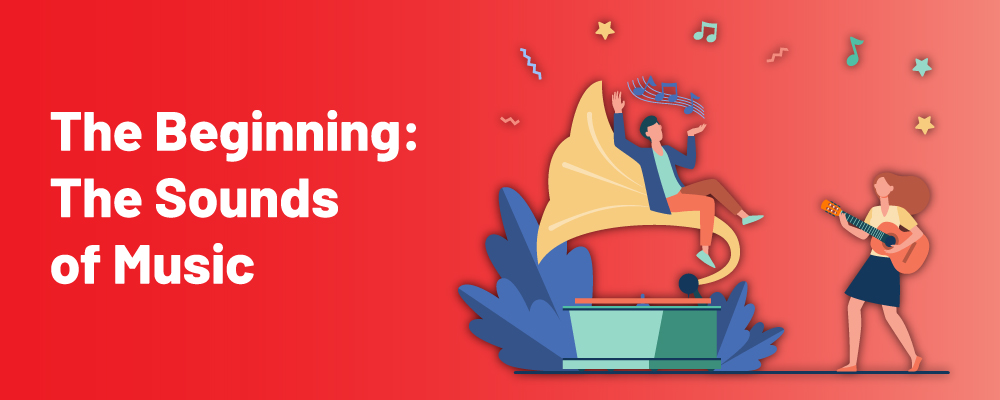
As we’ve mentioned, the capacity for rhythm is thought to predate melody and many of the other aspects of musical creation we’d consider nowadays. Because of this, the earliest instruments are thought to be simple and percussion-based. When we say simple, we’re talking about literal rocks and sticks, and whatever else could come to hand, anything that can make a distinct, punchy sound that can be combined into a rhythm.
When the earliest forms of musical sound were being formed in tribal, ritualistic settings, it’s thought that the percussion instruments were used to represent animals and other environmental threats to the species.
So how do we know all this? Much of it is conjecture based on archeological and ethnomusicological findings, of course, but even today we have cultures on this planet that still observe similar communal practices.
Notable examples would be Natives in the Americas or still-existing African tribes who, even having embraced modernity, continue to observe and revere the traditions of their ancestors.
Now, if you’re thinking that “stick” or “rock” isn’t a suitable answer for what the first instruments were, we’re right with you. There’s another distinction to be made in whether an instrument is something that can make music or something fashioned to make music, and we’d lean towards the latter since you can make a rhythm with virtually any object.
For the more sophisticated tools, they’re all invariably flutes. In 1995 we found the Divje Babe Flute, a small instrument made from the femur of a bear in the Divje Babe park in Slovenia. It’s debated whether it was fashioned by Neanderthals or Cro-Magnons, and it’s been dated as far back as 60,000 years ago. Otherwise, we have a set of flutes from bird bone and mammoth ivory in a south German cave called Geissenkloesterle. Carbon dating determines they’re between 40,000 to 45,000 years old.
Likewise, Egyptologists have unearthed many flutes and even some harps all dating back to 4000 BCE. The development of instruments is so slow that the earliest instruments we identified in Egypt were still flutes, though lyres and clarinets seemed to have developed around 3500 BCE. A thousand years later in 2500 BCE, trumpets were developed in what would become modern-day Denmark.
A thousand years later again, we had the Hittites in 1500 BCE introduce a rudimentary form of the guitar to the world. This unknown chordophone has been referred to by some as a tanbur or an oud, but what matters more is the fact this innovation took place, not what it’s called. As you can imagine, this would only be the first Greek contribution to the musical world, with figures like Pythagoras developing the octave scale and Aristotle introducing the notation method, later on, all of which Boethius brought to Europe.
The chordophone was probably their most significant instrumental invention, however, since it established string instruments, and that eventually led to our favorite, the violin.
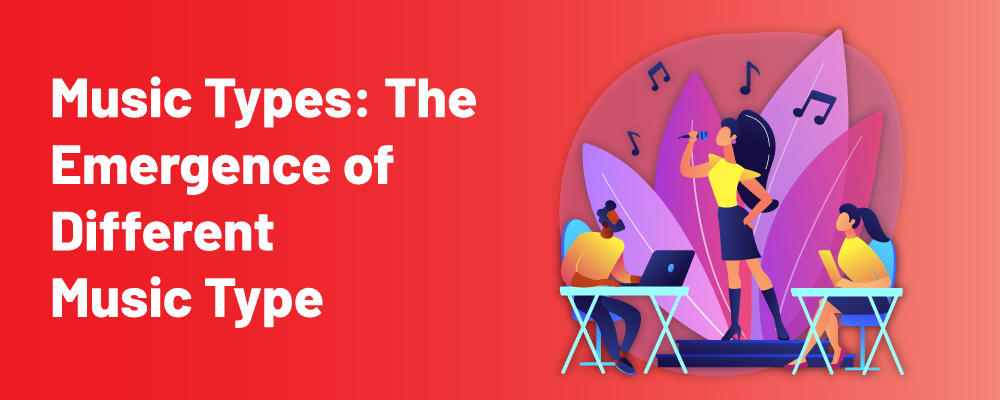
What happened after the invention of instruments is exactly what you’d expect, an explosion of different music types informed by the cultures and time periods in which each instrument was being used. The cultural context and the traditions surrounding music types came to be known as genres.
In truth, what classifies music as one type or another is often arbitrary once you break it all down, but the point of having differentiated styles is because it sounds different to us and that difference depends on musical taste.
We’ll go through the biggest music styles in more detail below with our guide to the history of music, but suffice to say that the last six hundred years have been rife with musical innovations that have expanded type and genre further than the inventors of any one instrument could have imagined.
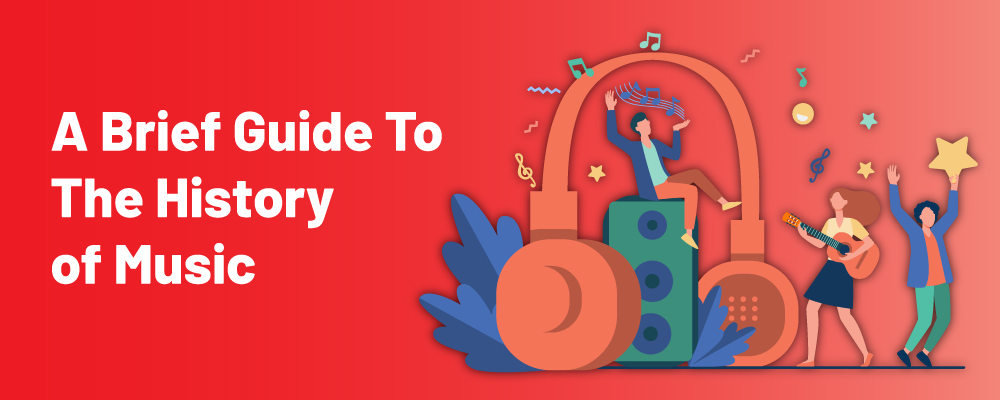
To put the entire recorded history music into a “brief guide” is no small task, but we have a way of doing it here. We’ve instead written a set of brief descriptions of musical styles throughout the last six hundred years, since presenting the entirety of music’s history in one brief would be impossible.
First, we’ll start by outlining musical drama and its origins, including that of the theatre in Greece, but we’ll pay more attention to music drama as it was developed by Richard Wagner.
Once that’s done, we have briefs outlining Renaissance, Baroque, Classical, and Romantic music styles that include their origins and the musical breakthroughs that occurred during these evolutions of sound.
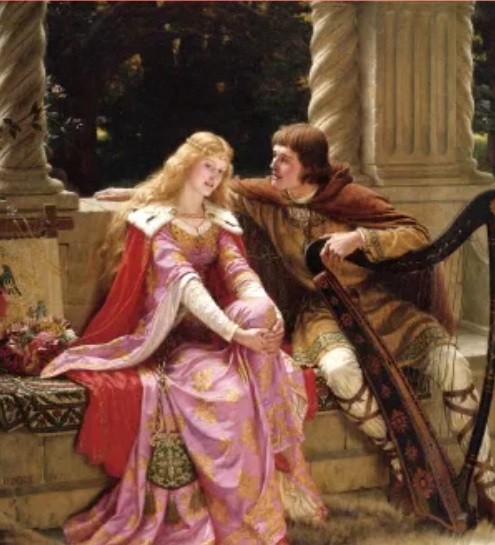
After that we move into the modern era, beginning with the popularization of jazz, blues, and big band music in the 1920s, and then their evolution into the country, rock and roll, hip hop, electronic, and reggae music. After this section, you should have a fairly general understanding of how music has developed from prehistoric times to right this moment.
Music drama is a concept that’s used in musical theatre, but where did musical theatre get its start? It’s not much of a surprise that it was Greece, and even those with a passing knowledge of theatre or Ancient Greek culture may know about how it was the Greeks who developed what would become Western theatre.
Even if you’ve never heard the name Richard Wagner, you’ve been influenced by his theory of music drama. In fact, you probably have fond memories of certain media that use methods established by music drama, that’s how pervasive it is. There are certain melodies or chords that will remind you of a particular scene or moment from your favorite movie, even if it isn’t a musical, and that tradition can be traced back to the theory of music drama.
We say this because Wagner is generally credited with popularizing leitmotivs in his 1876 music drama Der Ring des Nibelungen, and leitmotivs are a staple of movie and videogame soundtracks, as well as traditional orchestral arrangements, pantomimes, and of course, modern musicals and operas. In developing music dramas, Wagner helped us to discover how music can enhance the dramatic power of a narrative, whether it’s an opera or not.
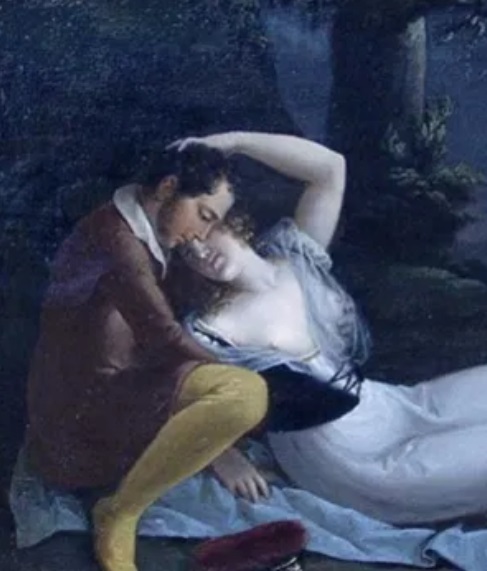
As we move into the more modern conception of music, we’re jumping from prehistory to the Classical and Romantic periods since that’s where the next big transformation of music occurs, and it only continues on from there. We’ll start with the Renaissance in the 1400s and end with the Late Romantic period of the 1860s onward, so let’s get going.
Renaissance (c.1400 – c.1600): Setting aside stick banging and bone flutes, the foundation of modern music is thought to have begun in the Renaissance, or more specifically the classical music that had its foundation in the Renaissance. Everybody knows the Renaissance as an artistic rebirth of Europe, so it’s no surprise that musical development was part of the radical artistic and cultural shifts that occurred during this period.
The Renaissance was partially spurred by the invention of the Gutenberg printing press since it allowed for the mass distribution of material. Through the press political, economic, and religious treatises were sent throughout Europe, causing quite the stir, but it wasn’t long until the music was being printed by them too. The press allowed a composer to easier profit from his works, and the press allowed our old friend Boethius’ writings on old opera to be published in the relevant languages.
All of this expanded the freedom that the average person had, and this included freedom in straying from old musical traditions. The musical Renaissance saw more rhythmic and harmonious variety than the mandated, choral pieces pre-1400 that were often performed during worship, and Guillaume Du Fay became one of the more famous names that led this transitional phase. As secular music grew, other figures like Josquin des Prez, Luca Marenzio, and Carlo Gesualdo rose to prominence.
Think of the Renaissance period as the perfect setting stage for the musical innovations made during the baroque, classical, and romantic periods.
Baroque (c.1600 – c.1750): The Baroque period is thought of by musicologists as an active and uninhibited reaction to the new toys that the Renaissance had created. Baroque music is generally fast-paced and frequently changes volume and melody, hence its reputation for being frantic and chaotic, though there was usually rigorous composition behind each piece. You’ve probably heard of the most famous Baroque composers, those being Johann Sebastian Bach and Antonio Vivaldi.
We have the Baroque period to thank for common-practice tonality, along with some more changes to musical notation to keep up with the fast and frantic chord progression of Baroque musical pieces. Where monophony was ditched for polyphony in the late Renaissance period, Baroque took this baton and ran with it too, creating even more complex pieces featuring many independent melody lines. Baroque music is often thought of as more emotional and expressive because of its uninhibited nature when it hits the ear.
Classical (c.1750 – c.1830): The Classical period of music took note of the Baroque innovations and held them as examples to perfect. This lost the uninhibited edge that Baroque is remembered for, and instead, Classical music looked to Greece for its musical inspiration. Remember how we mentioned Pythagoras and Aristotle’s contributions to music theory? Many Classical musicians made it their aim to make the perfect music by staying in line with what these philosophers and mathematicians had written.
This makes for a very technical approach to music, as you can imagine, and Classical music is generally described as being strong but lacking in emotion if compared to Baroque. Conservative music that lacks emotion isn’t to be read as boring, however, as the most by-the-numbers Classical composer Mozart can prove with his works. Beethoven was also technically active in the Classical period, but a lot of his music stood out for the time, and he would later find a more suitable musical label with Romantic music.
Early Romantic (c.1830 – c.1860): The Classical arms race to create more intense and expressionist forms of classically constructed music could only end in certain composers expanding beyond Classical music and into something else entirely. That would be Romantic music, and it was composers like Beethoven and Franz Schubert that led the charge. The main question of the early Romantic period was “how do you balance Classical musical theory with expressive, dynamic performances to get the best of both worlds?”
That question was best left to the virtuosos of the time, who would be able to marry technically impressive composition with quick, erratic, sometimes nonchalant performance playing. Like with all art of the Romantic period, artists would define their careers by a wholehearted embrace or rejection of Romantic art styles and traditions, and music composition was no exception here. Famous composers throughout this period include Frederic Chopin and Franz Liszt.
Late Romantic (c.1860 – c.1920): The tension between Classicism and emotional Baroque-inspired Romanticism could only go so far, leading to composers that would let their inspiration run free instead of observing the conservative musical traditions of the Classicist musicians. The exceptions, through stern opposition to this inspired revival of emotional and non-standard composition styles, would become memorable in such figures as Anton Bruckner and Johannes Brahms.
Otherwise, this expansion of dramatic capacity in Romantic music saw the rapid growth of the national music schools across Western Europe. Opera also boomed in a big way thanks to such figures as Giuseppe Verdi and, as we’ve already covered, the music dramas of Richard Wagner. Through Romantic music schools, a basic musical tradition was formed, though the nature of Romanticism meant that any orthodoxy would inevitably fracture as composers would divide into different, often opposing, schools of musical thought.
Some of these schools exhibited a fascination with music about legends and the chivalry of the Medieval period. Others focused on the supernatural, whether it was in line with religious ideas or radically influenced by mysticism or a secular understanding of spooky subjects. The primary trait of Romanticism, whether it was narrative, poetry, or music, was a fascination with the natural world and humanity’s place in it.
Composers like Chopin began to incorporate nationalistic ideas into his compositions, and many other Polish composers followed in response to political pressures in their region, something which the Polish people were no stranger to. The Czech Republic also had Bedrich Smetana and Antonin Dvorak creating nationalist music, while Norway had Edvard Grieg.
POST ‘GREAT WAR’ YEARS (C.1920 – PRESENT)
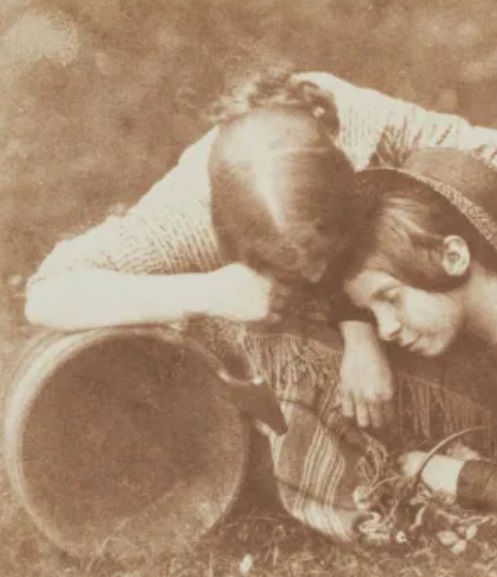
The Romantic and Nationalist musical era ended with the great upheaval that was the ‘Great War.’ With this drastic change to the social, political, and cultural fabric of Europe where many of the aforementioned composers have been based, the scene was set for a new age of musical innovation in response to the tragedy of war. Add to this the rise of the United States of America as a superpower and all of the cultural connotations that has, and you have a recipe for unparalleled musical innovation in the post-1920s world.
The result of this is what seems like the complete abandonment of an underlying compositional narrative that had existed during structured musical movements like Classicism and even the wilder Baroque and Romantic periods. Composers strayed in all directions, often opposed to one another, to find their own musical inspirations. It’s easy to see why, as both, the tragedies of the 1900s and an increasingly interconnected world undermined any musical orthodoxy that could be established.
This all meant experimentation was rife, and one of the earliest examples of this would be Austrian composers Franz Lehar and Anton Webern. Webern was experimenting with serial structure music while Lehar sought to revive the music that would come to be known as operettas, a style we can consider retro for the time. In the musical discord of the 1900s, however, we saw a lot of musicians, composers, and performers alike, bringing back old musical traditions and giving them their own modern spin.
We’ve covered the broadest and most influential movements of 1900s music below, to capture just how many distinct musical traditions surfaced during the last century.
JAZZ
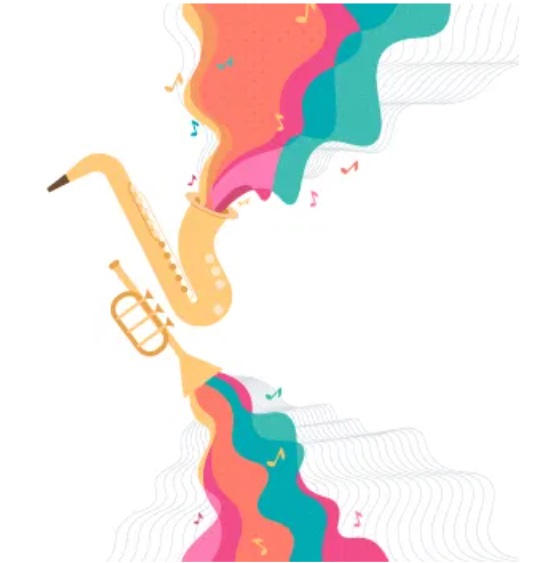
Jazz: What we call Jazz got its start in the 1900s, though it’s easy to tie it to the Blues movement of the late 1800s. We’ve talked about Blues below, so we’ll try to limit ourselves to explicitly Jazz musical traditions. The Jazz Age of the 1920s established jazz as a form of musical expression that combined both the legacy of African American hardship music and European musical teachings. It’s characterized by call and response vocals, chords that are complex, and a lot of improvisation, something its detractors are quick to fault it for.
It all began with New Orleans Jazz in the 1910s, otherwise called Dixieland music at the time, where brass band music went off-script to instead experiment with polyphony.
This lack of inhibition towards music has led many to write about the deeper similarities that could be described between the Baroque musical movement and the establishment of Jazz, where the performance is key and comes above traditional composition.
Many other jazz traditions emerged into the century; a predictable outcome given its improvisational nature. Jazz filtered out into modal jazz, Kansas City jazz, free jazz, and later smooth jazz and Latin/Afro-Cuban jazz in as late as the 2000s. It’s an enduring musical tradition despite, and maybe because, of its changing forms as it gets introduced to new populations over the world. Figures like Duke Ellington and Louis Armstrong would later be held up as examples of jazz musicians, though they contributed to other musical traditions at the time too.
BLUES
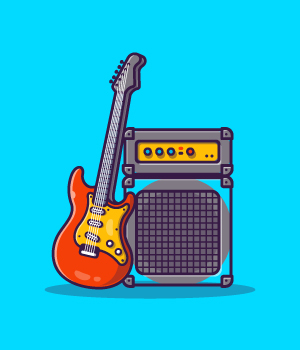
Blues: At the risk of repeating ourselves, Blues shares a lot of the musical origins of Jazz and is thought of as a precursor to the tradition. This is because Blues got its start around the 1860s, a time where African American musicians were given their freedom and began to contribute to the musical arts of the United States. This came in three main forms, traditional African music that had been remembered from many former slaves’ homeland, slave work songs sang during manual labor, and spirituals, oral affirmations of life’s hardships, and Christian faith.
From there, it’s easy to see where the core conceit of Blues originated, and it would come into the public consciousness during the so-called Urban Blues era.
This was where cities in the Deep South had established a shared musical tradition that could now be drawn from and contributed to, facilitating the rise of stars like Bessie Smith. Pre-World War II also saw Blues musicians Scrapper Blackwell, Charles Brown, and Nat King Cole take to the stage, and later the tradition brought us Chuck Berry and B.B. King, though they also contributed to the R&B and rock and roll scenes at the time.
Given its origins, Blues was a heavily racialized musical tradition during its earlier years, with the majority of popular Blues musicians being African American. However, like with most musical traditions, it quickly became democratized as the century continued on, as exemplified by a small performer from Mississippi called Elvis Presley. Of course, he wasn’t called the King of Rock and Roll for nothing, it should be said that the later, Blues-inspired musicians fractured off into many of the other traditions we’ve written about below. In fact, we’d say the majority of America’s musical traditions can be found to have some Blues influence, and those traditions have been exported all over the world via America’s cultural weight on the world stage.
Big Band: Surprise, it’s another music form that has its origins in Blues and Jazz! Put simply; big band music is when you have a big band of people playing jazz, it’s not that complicated. Because of that, it came onto the scene in the 1910s too but had its heyday in the 1940s when swing was a very popular musical tradition that demanded more musicians on the stage. These bands would have four sections, trumpets, trombones, saxophones, and the all-important rhythm section.
Big Band as a musical tradition is more specific than a bunch of people blowing through brass tubes, however, since big bands often did play other forms of music. Big Band music had its roots in dancing music and had come to interrupt the long-held and imported American dancing traditions of the waltz and the polka. As the jazz tradition spread east, we saw musicians like Duke Ellington begin composing for big bands. As this spread occurred, what was considered New Orleans Jazz quickly became something else with the help of figures like Ellington and Louis Armstrong.
Even bigger names would come later into the century who would play or perform with big band jazz music, mainly during the swing era, such as Frank Sinatra, Ella Fitzgerald, Billie Holiday, and Doris Day.
COUNTRY
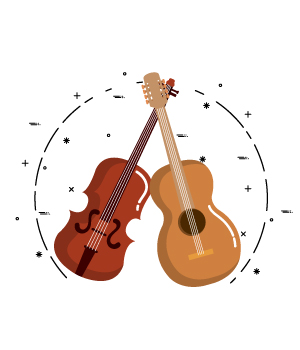
Country: Country music, while having its links to Blues as you may have predicted, developed from American folk music. Namely, these were the Appalachian musical tradition and the Cajun musical tradition, as well as some line-dancing and other old-time performances. These combined hymns, English-spoken ballads, Celtic fiddling, and of course African American Blues music to create an incredibly versatile sound set that has changed with the times and maintains relevance today.
The first country song is thought to be from Fiddlin’ John Carson’s “Little Log Cabin in the Lane” while Vernon Dalhart was the first country singer to hit it big in 1924. This started the first generation of country music but by the Great Depression most sales of country music dried up.
This period also saw the rise of commercial radio, however, which fragmented country music into western swing, hillbilly boogie with performers like Johnny Barfield and Tennessee Ernie Ford, and bluegrass or gospel music.
Honky Tonk music also came about during this time, performed by Hank Williams and Floyd Tillman, though they’d settle into traditional country roles later on while this country sub-tradition would go on to influence characters like Elvis, Jerry Lee Lewis, and Chuck Berry.
Perhaps the biggest names associated with country come from its third generation, the rockabilly era led by Bill Haley and Johnny Cash, and later Buddy Holly and Marty Robbins. The 80s saw the birth of what was called outlaw country, artists influenced by Johnny Cash. Willie Nelson would become associated with outlaw country, as would Hank Williams’ son Hank Williams, Jr., Waylon Jennings, and Merle Haggard.
Country pop, on the other hand, saw the rise of performers like John Denver, Kenny Rogers, and Dolly Parton during the same time period. Since the 80s and 90s, country music has fused with other musical traditions like pop, rock, and bluegrass, and only seems to be going from strength to strength.
ROCK AND ROLL
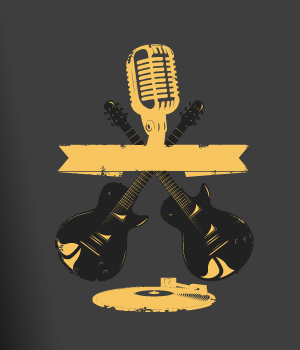
Rock and Roll: Rock and Roll is perhaps the biggest movement of popular music in the 1900s, beginning in the 40s and 50s out of established jazz, country, and R&B roots. Part of the establishment of Rock and Roll as a distinct tradition separate from those that inspired it was the inclusion of new technology. The electric guitar, accompanying amplifiers, and the ability to write on 45 RPM records produced a distinct sound from country and jazz at the time.
There’s no one song we can point to, though many agree that Bill Haley’s “Rock Around the Clock” was an important milestone in mainstreaming rock and roll music. Many names we’ve already mentioned established themselves by embracing rock and roll, many having already participated in the other musical traditions of the century.
The biggest were performers with mainstream hits like Jerry Lee Lewis and Chuck Berry.
Then rockabilly developed in the 1950s, which brings in more familiar figures like Elvis and Johnny Cash who participated in the R&B and country scenes respectively. As the century develops, it certainly becomes harder to distinguish artists from their participation in musical traditions, since there’s almost always a crossover somewhere.
Hip Hop: If you’ve read the Blues section where we talk about slave hardship songs and spoken-word spirituals, it’s probably easier to see how hip hop developed. As the technology around music-making developed, carrying music traditions like rock and roll further into the century, the old Blues traditions had filtered out into its many legacy traditions. In hip hop, there are two distinct methods of performance, those being MCing or rapping and DJing and music mixing. Beatboxing may also play a part, and between the three you have a vocal element, sound creation, and imitation of percussive sounds.
Hip hop began in the Bronx, New York City, in the 1970s, so pretty late into the time frame we’re talking about right now. It found some mainstream appeal through Grandmaster Flash and the Furious Five and The Sugarhill Gang, both of which were active in the late 70s, as well as through DJ Kool Herc and the Zulu Nation confederation of hip-hop artists.
As hip hop became more influential in the 80s, so too did it become socially conscious, and groups like Public Enemy and Run-DMC used their music to make social statements about inner-city poverty and other issues plaguing the areas where hip hop had sprung from. This would develop into gangsta rap in the 90s, an offshoot of hip hop led by people like Ice T and groups like N.W.A who would face criticisms for the content in their lyrics. Hip hop has since been heavily commercialized, resulting in many of the artists you may think of today when rapping comes to mind.
ELECTRONIC
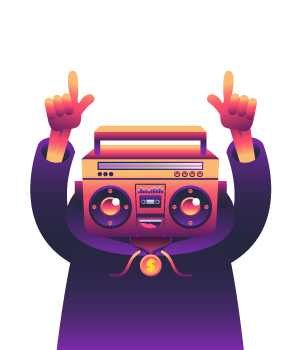
Electronic: Electronic music is probably the most far-removed from traditional musical traditions due to the fact it often uses synthesizers and turntables to create its sound. While hip hop used sound-making machinery in conjunction with vocalizations and percussive elements. Composers as early as the 1920s can be credited as being the progenitors for what would become electronic music, people like Joseph Schillinger, though the overreliance on electronic instruments was criticized. These instruments allowed changes in pitch that’d be impossible by conventional means, and playback speed could also be adjusted.
These innovations were seized upon by figures like Edgard Varese and John Cage, while technological advancements in recording hardware pushed by Norman McLaren whose works would go on to contribute to hip hop.
The most famous electronic music studio in the world would be established at the German NWDR where key figures Karlheinz Stockhausen and Gottfried Michael Koenig would join them. At the same time, technological innovations led by Yamaha saw Japan start to develop electronic music as a style.
Some of these electronic innovations went on to be used by the Beatles and The Beach Boys, especially as rock began to turn into progressive rock with Genesis or synthpop with the Eurythmics.
REGGAE
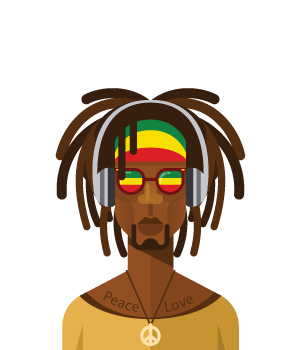
Reggae: Everyone knows that reggae finds its origins in Jamaica and, despite being its own musical tradition, a lot of modern Jamaican music is called reggae by default. Once again, there are strong blues and jazz influences at play in the establishment of reggae, as well as some faith music as most reggae music is used to deliver Rastafarian messages.
Bob Marley and the Wailers are the reggae influence that most people will know, but otherwise, it was the Toots and the Maytals who are thought to have popularized the word reggae first.
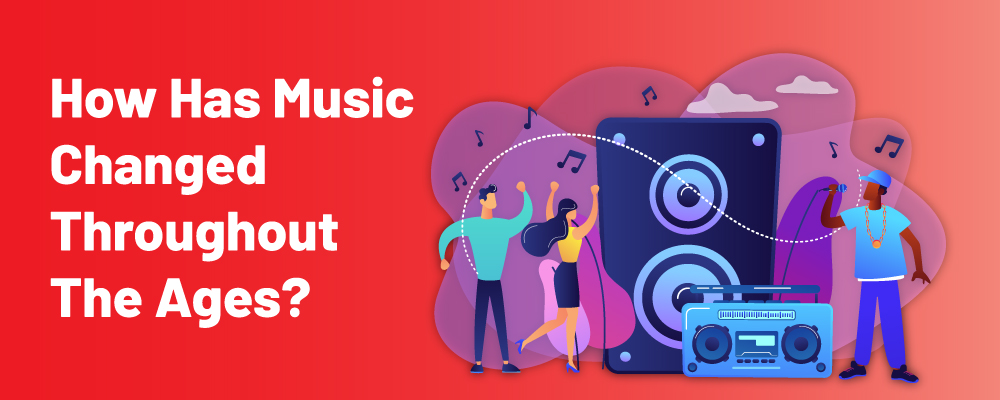
There’s an obvious answer here and a not-so-obvious answer. The obvious is that the instruments we use have become a lot more advanced and specialized. We’ve come a long way from flutes that are made from bones, and the rate of instrument invention has dramatically increased. Consider this, there were tens of thousands of years between the ancient flutes we’ve found and the earliest Egyptian flutes, yet virtually no innovation took place in that time, while the 1900s alone has seen an unparalleled change in how music is composed and performed.
The not-so-obvious answer would be that the musical traditions used to be much more centralized. The 1900s saw a democratization of music, who could write it, who could read it, who could perform it, et cetera, while before then musical traditions seemed to fall into a cycle. The religiously inspired Medieval music gave way to Renaissance and Baroque, which were relatively uninhibited. Then Classicism happened, and music composition was treated like science until Romanticism revived the old Baroque lack of inhibition in a rejection of Classicist values. Before musical orthodoxy became irrelevant in the 1900s, there seemed to be a cycle of orderly versus chaotic composition.
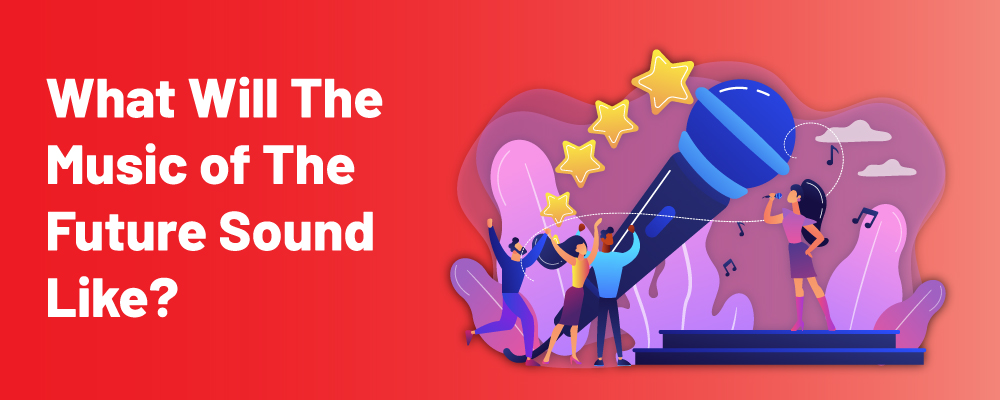
More genres and musical traditions, inevitably. Look at all the 1900s had given us, the explosion of global civilization in the last century has all but guaranteed that the rapid innovations in the music industry are only going to continue. Music-making tools are available for anyone, and there’s something to be said for the democratization of these tools and how they’ll blend genres to make them less distinct.
Rockabilly was one thing, but the existence of the Internet and extensive documentation of older musical traditions means that small groups can pick up older styles and reinvigorate them for the 21st Century by mixing them with modern traditions. Consider example genres like electro-swing or synthwave, where electronic music is combined with an 80s movie composer aesthetic. The sky’s the limit, and any prediction will probably fall short of what will actually happen.
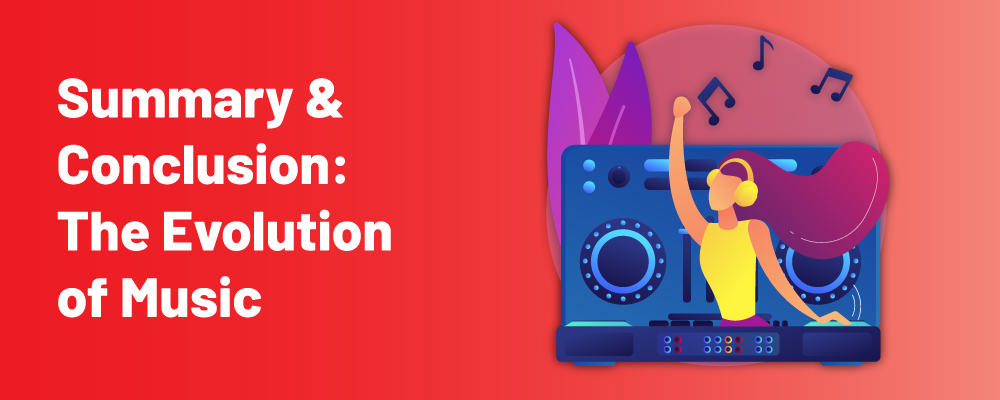
With that, we’ve given a general guide to the entire history of music. There are a few things we missed out, for sure, but condensing tens of thousands of years of musical expression means that a microgenre or some of your favorite performers’ names get dropped for the big names out there.
We’ve covered how music, as well as musical literacy and the capacity for making instruments, has evolved over time. At first, it was a slow and unsteady growth, a flute here in Egypt, a tanbur there in Greece thousands of years later, but the rate of innovation grew with time. It’s only getting faster, too, and more sophisticated or downright experimental, so there’s no stopping the music any time soon and absolutely no way to tell where we’re going, and that’s exciting.
